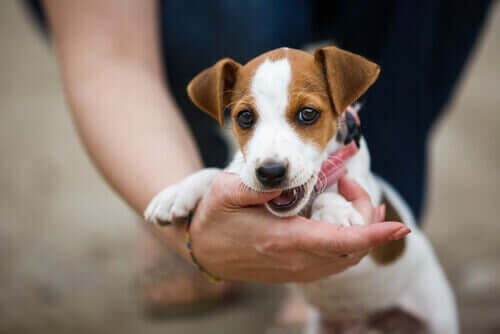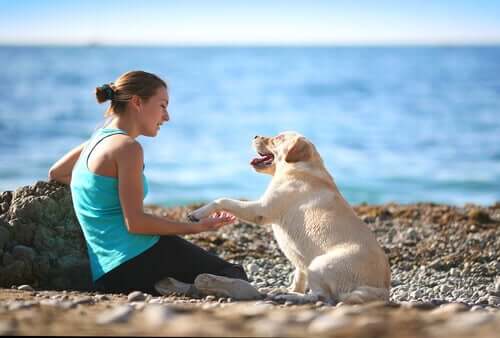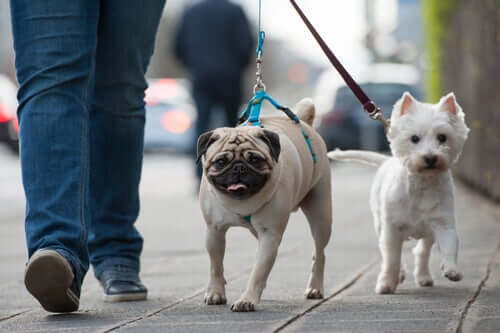How to Have a Well-Behaved Dog

The training of dogs is very important in order to have a well-balanced and happy pet with which you can live peacefully in your home. Good communication between owners and their pets is fundamental in order to produce a well-behaved dog.
Communication with your dog
In order to train your dog, you need to have good communication, understand your pet’s behavior, and make yourself understood in order to comprehend one another. Unlike wolves, after thousands of years of living alongside humans, they’ve learned to read our expressions. Therefore, it’s fundamental that pet owners form a bond with their dogs.
Observe your pet, recognize its different moods and when your animal is receptive to learning. Figure out what catches your dog’s attention and what things frighten him or her.

The socialization period
The socialization period is the stage when puppies are most receptive to learning and recognizing and interacting with their environment. This occurs between 3 and 12 months of age. During this time period, maturation occurs in their nervous system through new neurological connections in the brain.
For this reason, it’s very important that you expose your dog to as many stimuli as possible during the socialization period… all types of people, sounds, other dogs, etc… in order to avoid future phobias in your pet’s adult life.
Controlling your dog’s bite
A well-behaved dog is one that keeps its chewing and biting under control. Dogs need to learn this during their first three months of life. When it comes to a litter of puppies, it’s their mother who teaches them to control their bite through. We can imitate this with our pets.
If you’re playing with your pet and it starts to bite your hands, then stop the game and say “no” calmly. Make sure you don’t get your dog more riled up. At the same time, try to redirect the bite to objects like chew toys or other toys that belong to your pup. It’s important to devote whatever time it takes to teach it to control its biting and chewing. That way your dog will learn not to bite as an adult when its teeth and jaws can cause much more damage.
Teach your dog where to do its business
If you want a well-behaved dog, then you also want to teach it to “go to the bathroom” in the right place. In order to do this, you’ll need to take short and very frequent walks when your dog is a puppy. That way, he or she will start to associate the outdoors with going to the bathroom.
The best thing you can do is to take advantage of the moments after playtime, meals, or naps. These are the times when your dog will have the most need to urinate and defecate. Each time your pup does its business in the right place, you should offer a reward so that your dog associates the two things.

Positive reinforcement
The best way to have a well-behaved dog is through positive reinforcement. Each time that your animal behaves the way you want, you should reward the action with a prize. This can be a treat, praise, affections, toys, etc.
If you resort to yelling or punishing your dog, all you’ll get is a dog that’s afraid. Your animal will learn to associate bad experiences with daily situations like bathing, grooming, interacting with other dogs, etc.
What’s more, once some time has gone by since the undesired behavior, it’s pointless to scold your dog. Your pet will no longer associate the action with the punishment and will try to change your mood through calming signals.
Education or training
Educating and training a canine are two different things. Many times, what we believe to be a problem with training is actually a problem with a dog’s education. For example, when one dog tends to bite other dogs.
Training consists of teaching dogs to learn certain skills. For example, to respond to orders like “stay”, “come”, “sit”, “shake”, etc. Basically, it means teaching obedience.
However, educating a dog refers to teaching dogs to go about all sorts of daily activities in a normal way. For example, going for a walk, interacting with other people and animals, mealtime, going to the vet, etc.
Remember that a well-behaved dog doesn’t necessarily possess the same abilities or perform the same tricks as a dog that’s gone through training .
All cited sources were thoroughly reviewed by our team to ensure their quality, reliability, currency, and validity. The bibliography of this article was considered reliable and of academic or scientific accuracy.
-
- Etolia. Etología veterinaria. El periodo de socialización.
- ATEUVES. El desarrollo del perro: periodo de socialización del cachorro.
- Schwartz, C. El comportamiento del perro. L’Hospitalet, EditorialHispano Europea, 2005.
- Habla con ellos – Educación y adiestramiento canino